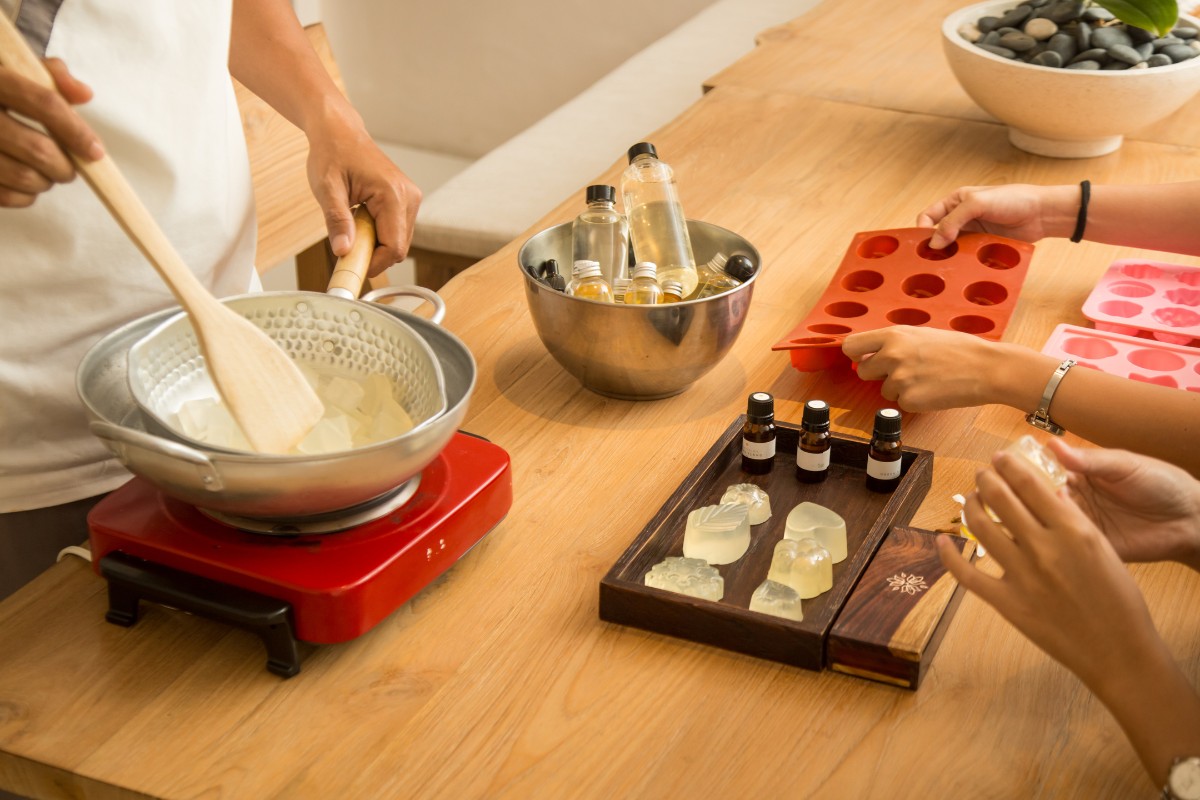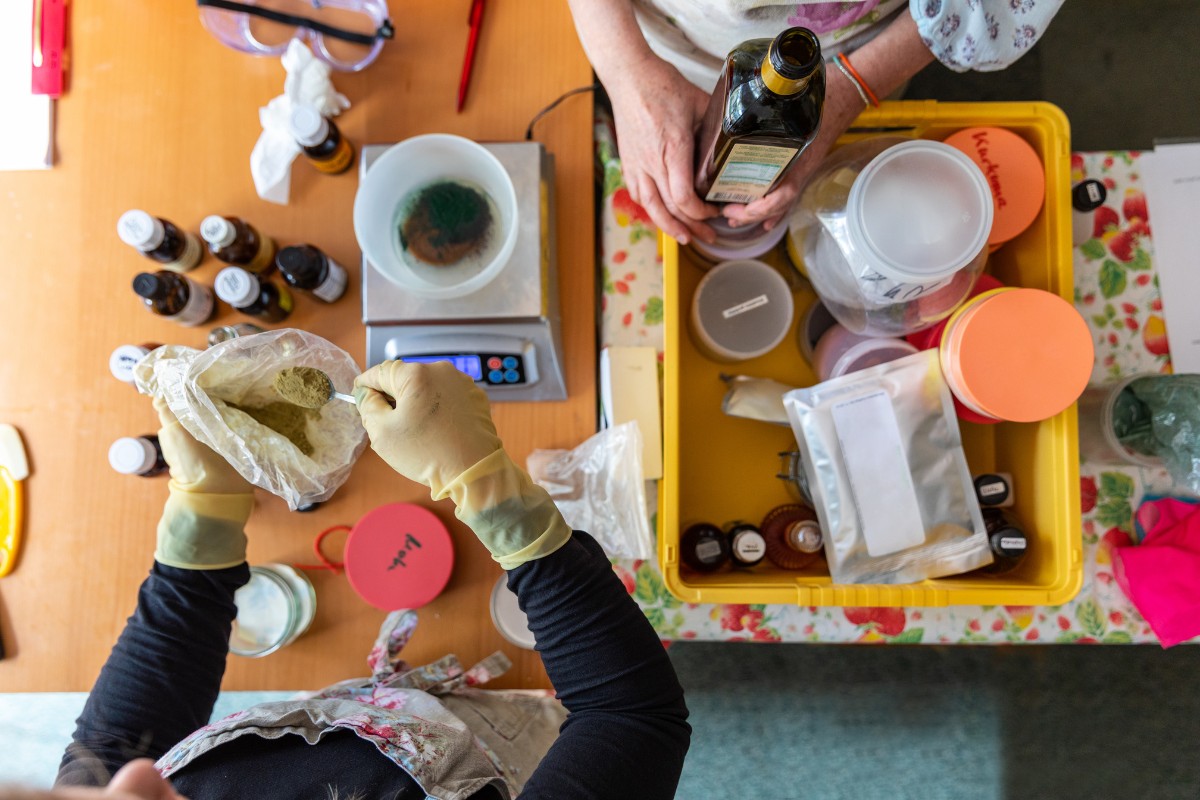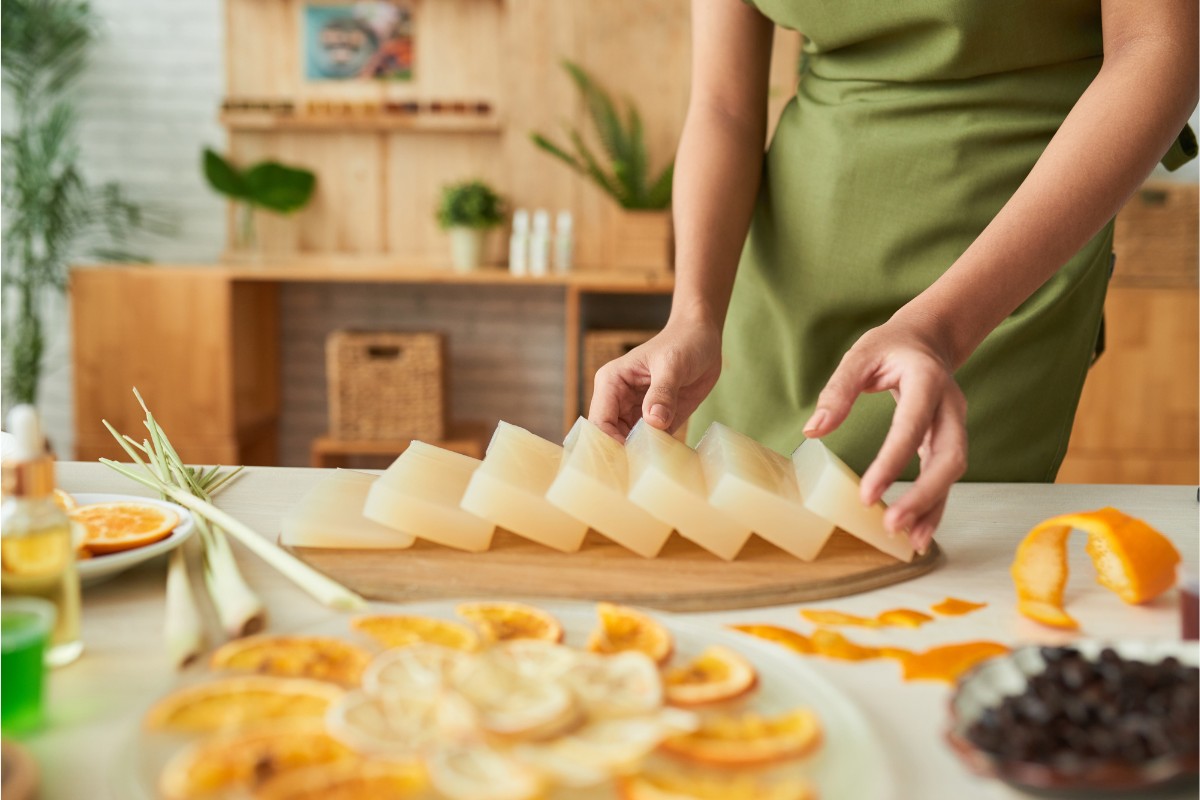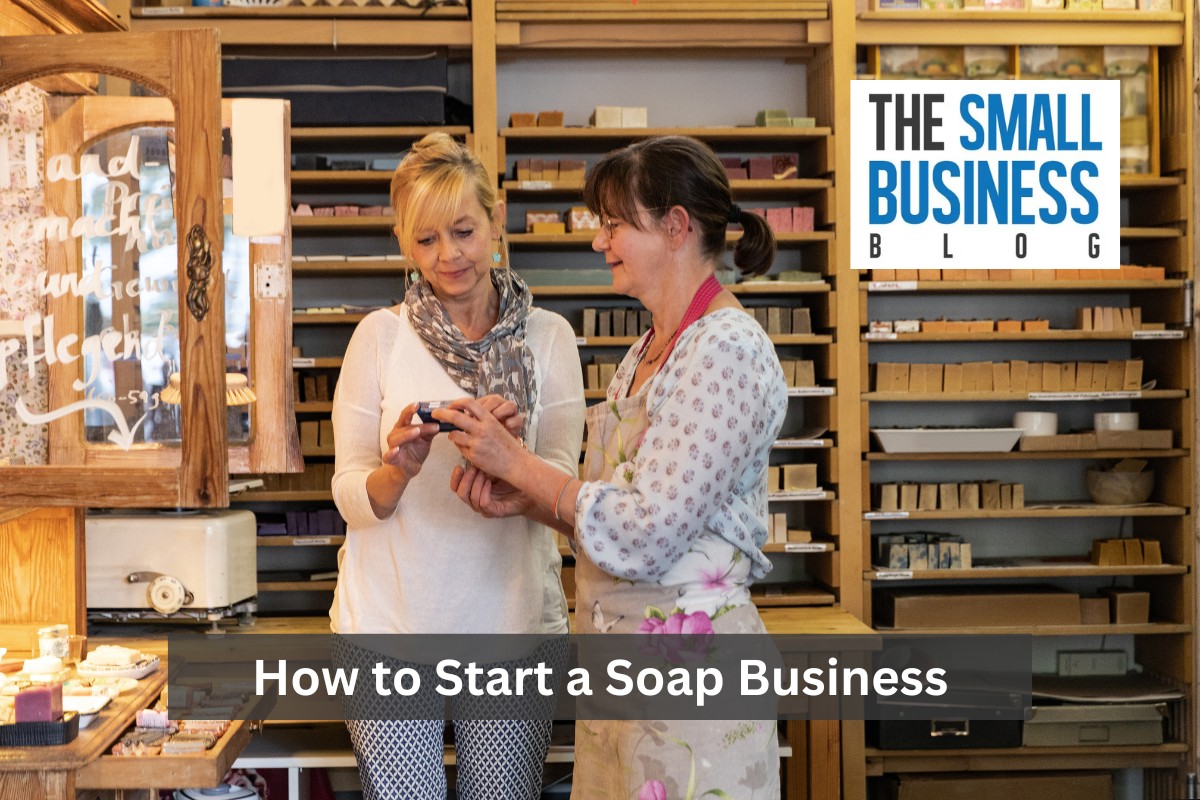Starting a soap business can be a rewarding venture, both creatively and financially.
If you’re passionate about crafting beautiful, fragrant soaps and want to share them with the world, this guide is your roadmap to success.
In this article, we will walk you through how to start a soap business and the strategies needed to launch your soap business and establish a strong foundation.
Post Contents
- 1 How To Start A Soap Business
- 1.1 1. Finding Your Niche and Market Research
- 1.2 2. Registering Your Soap Business
- 1.3 3. Selecting the Right Ingredients
- 1.4 4. Soap Making Process
- 1.5 5. Fragrances and Colors – Creating Unique Combinations
- 1.6 6. Branding Your Soap
- 1.7 7. Packaging and Presentation
- 1.8 8. Online Marketing Presence
- 1.9 9. Setting Competitive Prices
- 2 Best Practices for Long-term Successful Soap Business
- 3 Frequently Asked Questions
- 4 Conclusion
How To Start A Soap Business
Let’s dive into the process of soap-making and creating a business step by step.
1. Finding Your Niche and Market Research

Identifying a niche for your soap business is the pivotal first step.
It’s not just about making soap; it’s about creating a unique identity for your brand.
Your Unique Selling Proposition (USP) is the magic that sets you apart from the competition.
When finding your niche, consider what makes your soap products distinctive.
Are you focusing on all-natural, organic ingredients, or perhaps you’re known for exquisite fragrance combinations?
Maybe your specialty is handmade artisanal soaps, each one a mini work of art.
Your USP differentiates your soaps from generic alternatives and attracts discerning customers.
Understanding what your target audience desires is essential.
Research the soap preferences of your potential customers.
Do they favor gentle, sensitive, skin-friendly soaps, or are they looking for bold, invigorating scents that provide an energizing shower experience?
The more you comprehend your audience, the better you can tailor your soap offerings and marketing strategies to meet their needs and desires.
2. Registering Your Soap Business
Ensuring that your soap business complies with local and national regulations is imperative.
Here’s a checklist to help you navigate the legal aspects:
- Business Registration: Start by registering your soap-making business as a legal entity, whether a sole proprietorship, LLC, or corporation.
- Permits and Licensing: Check with local authorities and health departments for any permits and licenses required for soap production. These may include food handler’s permits, cosmetic manufacturer licenses, or business operation permits.
- Safety and Quality Standards: Comply with safety and quality standards set by relevant agencies. This includes labeling requirements, ingredient disclosure, and adherence to good manufacturing practices (GMP).
- Insurance: Consider obtaining business insurance to protect yourself in unforeseen events. Liability insurance can be vital if you’re selling products to the public.
3. Selecting the Right Ingredients
Choosing the appropriate ingredients is the very essence of soap making.
Each soap type requires a specific combination of materials, and understanding the properties of these components and their effects on the skin is paramount.
Here’s how to make informed decisions when selecting your ingredients:
Base Oils and Fats
The foundation of your soap, base oils and fats, is crucial in determining the soap’s texture and lather.
Standard options include olive oil, coconut oil, shea butter, and cocoa butter.
Each imparts unique qualities to your soap, from moisturizing to cleansing properties.
Lye (Sodium Hydroxide)
Lye is the chemical agent that causes saponification, the process by which oils and fats transform into soap.
You need to handle lye with care, follow safety guidelines, and measure quantities accurately to avoid any skin irritation or chemical mishaps.
Additives and Superfatting
You can enhance your soap with additives like clays, herbs, essential oils, or fragrance oils.
These elements contribute to color, texture, and scent.
Superfatting involves adding extra oils to the soap mixture, ensuring it’s gentle on the skin.
Water
The water you use in the soap-making process is crucial.
Distilled water is the preferred choice as it doesn’t contain impurities or minerals that can affect the final soap quality.
4. Soap Making Process

Becoming a skilled soap artisan means mastering various soap-making techniques.
Each method has its unique characteristics and processes.
Here’s a brief overview of the primary methods:
- Cold Process: In this method, oils and lye are combined at a temperature that does not require external heating. It’s known for its versatility, allowing for intricate designs and various ingredients.
- Hot Process: Unlike the cold process, soap-making involves external heat sources to accelerate saponification. It reduces the curing time and produces rustic, textured soaps with a more earthy appearance.
- Melt-and-Pour: This is the simplest soap-making method, ideal for beginners. You start with pre-made soap bases, melt them, and add your chosen fragrances, colors, and additives. It doesn’t require working with lye, making it safer and less time-consuming.
5. Fragrances and Colors – Creating Unique Combinations
Fragrances and colors add the final touches to your soap, transforming it into an alluring and sensory experience.
When working with fragrances and colors, consider the following:
Select fragrance oils that align with your soap’s theme or target audience.
From soothing lavender to invigorating citrus, the fragrance can evoke a particular mood or sensation.
Remember that some scents may have different effects on various skin types, so always be mindful of potential sensitivities.
For a natural and holistic approach, essential oils are a superb choice.
They not only infuse your soap with captivating scents but also offer therapeutic benefits.
Each essential oil carries unique properties, from calming lavender to uplifting eucalyptus.
Then, enhance the visual appeal of your soap with colorants.
Natural options like clays, herbs, and spices can provide subtle hues, while synthetic colorants allow for more vibrant and consistent colors.
Ensure the chosen colorants are skin-safe and won’t cause any adverse reactions.
6. Branding Your Soap
Developing a compelling brand identity is the cornerstone of your soap business.
It’s about creating an emotional connection with your target audience and setting yourself apart from the crowd.
It starts with choosing a brand name that’s memorable, unique, and easy to pronounce, reflecting your soap offerings.
Your logo, whether minimalist or intricate, should instantly represent your brand.
Additionally, your mission statement defines your business’s purpose and values, resonating with your audience and conveying your commitment to quality, ethics, and customer satisfaction.
Together, these elements form a compelling brand identity distinguishing your soap business in a crowded market.
7. Packaging and Presentation

Your soap’s packaging is the first thing your customers will see, making it a crucial element of your business.
Here’s how you can make it both attractive and eco-friendly:
Visual Appeal
Invest in packaging that not only safeguards your soaps but also entices customers.
Consider the visual aesthetic, colors, and designs that align with your brand.
Your packaging should be an extension of your brand identity.
Eco-Friendliness
In an increasingly environmentally conscious world, eco-friendly packaging is a significant selling point.
Consider using recyclable materials and minimalistic, sustainable packaging.
This not only appeals to ecologically aware customers but also showcases your commitment to responsible business practices.
Informative Labels
Ensure your packaging provides all the necessary information about your soap.
It includes the ingredients used, any special features, and your brand’s contact information.
Customers appreciate transparency and clarity when making their purchase decisions.
8. Online Marketing Presence
In the current age of technology, having an online presence is necessary.
It’s your virtual storefront, where customers can explore your soap products, learn about your brand, and make purchases.
Here’s how to make the most of your online presence:
User-Friendly Website
Your website should be easy to navigate and aesthetically pleasing.
It should showcase your soap products with high-quality images and detailed descriptions.
Make the online shopping experience as seamless as possible.
Social Media Channels
Regularly post engaging content, including product updates, behind-the-scenes glimpses, and customer reviews.
Engage with your followers and build a community around your brand.
Email Marketing
Build an email list of customers interested in your products.
Send out newsletters with updates, promotions, and valuable content related to soap care and usage.
9. Setting Competitive Prices
Determining the right pricing strategy is a delicate balance between covering production costs, staying competitive in the market, and creating perceived value for your customers.
Calculate your production costs, including raw materials, labor, packaging, and overhead expenses.
This will give you a baseline for setting your prices.
Also, Consider what makes your soaps special.
Is it the high-quality ingredients, unique fragrances, or eco-friendly packaging?
Highlight these aspects to create a sense of value that justifies your pricing.
Best Practices for Long-term Successful Soap Business

Building a successful soap business goes beyond the initial steps of crafting and marketing.
To ensure long-term prosperity, consider these best practices that can help you stand the test of time:
1. Continuous Learning and Innovation
Stay ahead of the curve by continuously expanding your knowledge and embracing innovation.
Attend soap-making workshops, explore new ingredients, and experiment with unique techniques because innovation not only keeps your products fresh and exciting but also sets you apart from the competition.
2. Quality Assurance
Consistency in the quality of your soap is paramount, so invest in robust quality assurance measures to ensure every batch meets your high standards.
Quality products build trust and lead to satisfied, loyal customers.
3. Customer Engagement
Nurture your customer relationships by engaging with them regularly.
Encourage feedback and respond to queries promptly.
Hosting events, workshops, or soap-related content can foster a sense of community around your brand.
4. Diversification
Consider diversifying your product range to appeal to a broader customer base.
Beyond soap bars, explore options like liquid soaps, bath bombs, or spa kits.
5. Sustainability
Embrace sustainability in your business practices.
Utilize eco-friendly packaging, implement waste-reduction strategies, and consider sourcing ingredients from ethical and environmentally responsible suppliers.
A commitment to sustainability can attract environmentally conscious consumers.
Frequently Asked Questions
How can I make my soap products stand out in a competitive market?
To stand out, focus on unique ingredients, fragrances, and packaging.
Embrace eco-friendly and sustainable practices, which can attract eco-conscious consumers.
Can I start a soap business from home?
Yes, many soap makers begin their businesses from home.
Check local regulations and ensure compliance with safety and quality standards.
What are the best platforms to sell handmade soap online?
Popular platforms for selling handmade soap include Etsy, Shopify, and your e-commerce website.
Social media can also be a powerful marketing tool.
Conclusion
Starting a soap business is an exciting journey that allows you to blend creativity and entrepreneurship.
With dedication, a unique approach, and a commitment to quality, you can turn your passion for soap-making into a thriving business.
Now that you know how to start a soap business, you just need to follow the outlined steps, and you’ll be well on your way to building a successful soap business.






























